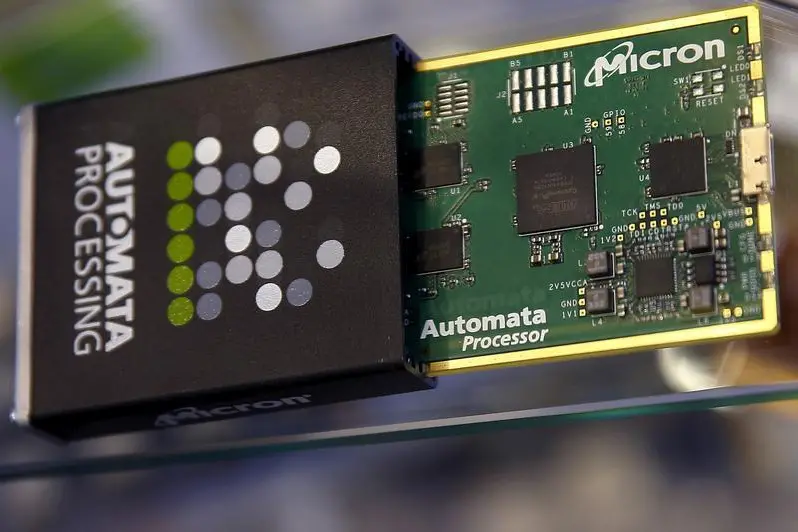PHOTO
NEW YORK - The chip industry’s new paradigm looks like the old one. As cutting-edge semiconductors got harder to make and demand boomed from new fields like bitcoin mining, top manufacturers seemed invulnerable. But shrinking sales forecasts from Nvidia and Applied Materials show companies are as prone as ever to economic cycles and excess inventory.
The past decade has been a happy one for the traditionally boom-and-bust industry. It has become harder, and more expensive, to produce ever more sophisticated chips. To cope with rising costs, the industry consolidated, which restrained over-expansionist tendencies. At the same time, chip demand continued to rise. Profits boomed, and the Philadelphia Semiconductor Index rose sixfold over the past decade.
One of the hottest areas has been graphics processors. In addition to making games more realistic, these chips are useful for machine learning, self-driving cars, and mining cryptocurrencies. Specialist Nvidia saw its stock rise 20-fold over the past decade, boosting its market capitalization to a lofty $175 billion last month.
The euphoria blinded investors to the fact that other causes of past booms have not been overturned. Demand is cyclical, and a booming economy has inflated chip sales. In hot sectors where demand outruns supply, customers order more than they need, in hopes of receiving adequate supply. And chipmakers invest heavily to meet expected future sales.
Nvidia’s warning that next quarter’s revenue will be about 20 percent less than analysts had expected is a classic case. The company blamed a burst cryptocurrency bubble, saying it would take another quarter or two to work through excess chip supply. Chief Executive Jen-Hsun Huang said he was as “surprised by it, as anyone else” and noted that rivals faced similar problems. Perhaps, but demand for gaming and data center chips also is coming off the boil. Inventories and accounts receivable have risen sharply, and now total a third more than estimated sales for next quarter.
Inventory problems are hard for chip firms. High fixed costs mean profits rise sharply alongside volumes, while margins fall through the floor as inventories are worked off. Moreover, advanced chips shed value as they sit around, losing their technological edge. Firms usually slash capital expenditure to deal with bloat. Last night’s warning by Applied Materials – the biggest maker of equipment for chipmakers – of slower future sales suggests this is happening across the industry.
This chip cycle is starting to resemble past ones.
On Twitter https://twitter.com/rob_cyran
CONTEXT NEWS
- Nvidia said on Nov. 15 it had revenue of $3.18 billion for the third quarter, missing analyst forecasts of $3.24 billion, according to I/B/E/S figures from Refinitiv. The graphic-chip company estimated sales of around $2.7 billion for the fourth quarter, short of analysts’ estimates of $3.4 billion.
- The company blamed a buildup of unsold chips at distributors following the ending of the cryptocurrency boom.
- Separately, Applied Materials said on Nov. 15 that first-quarter revenue would be between $3.56 billion and $3.86 billion. Analysts had been forecasting sales of $3.95 billion for the semiconductor-equipment maker in that quarter.
- Shares in Nvidia fell 18 percent in early trading on Friday, while Applied Materials shares declined 8 percent.
- SIGN UP FOR BREAKINGVIEWS EMAIL ALERTS http://bit.ly/BVsubscribe
(Editing by Tom Buerkle and Martin Langfield)
© Reuters News 2018












